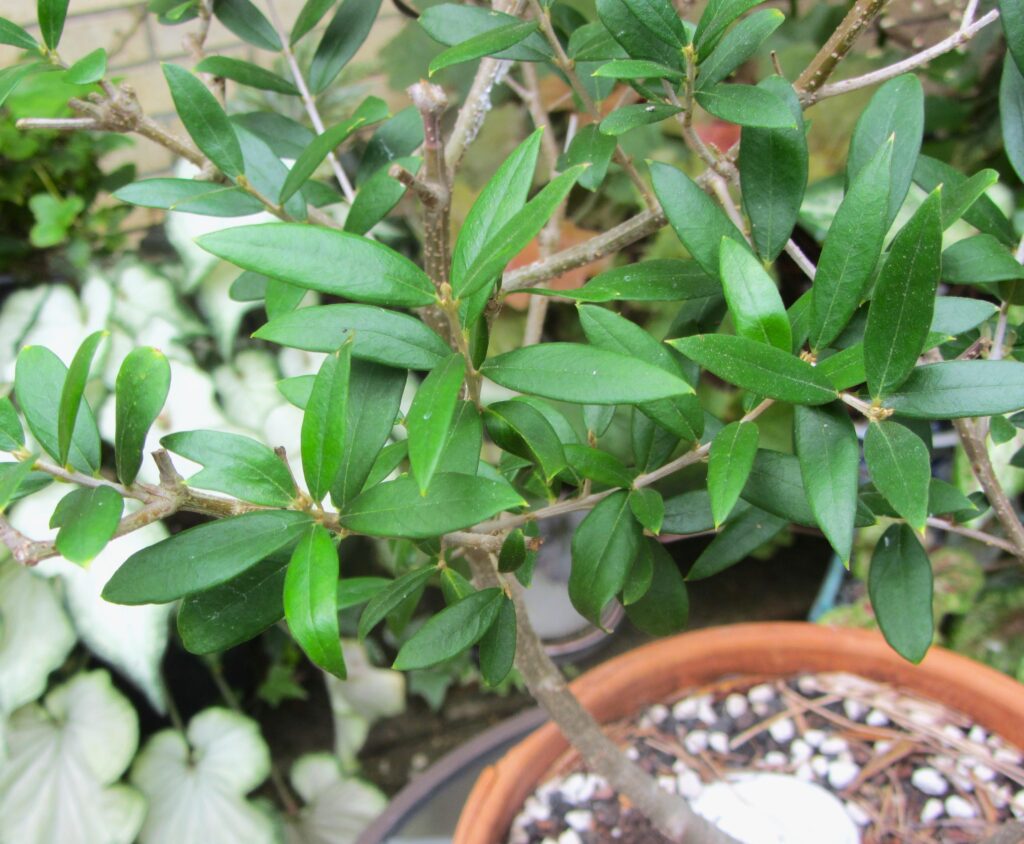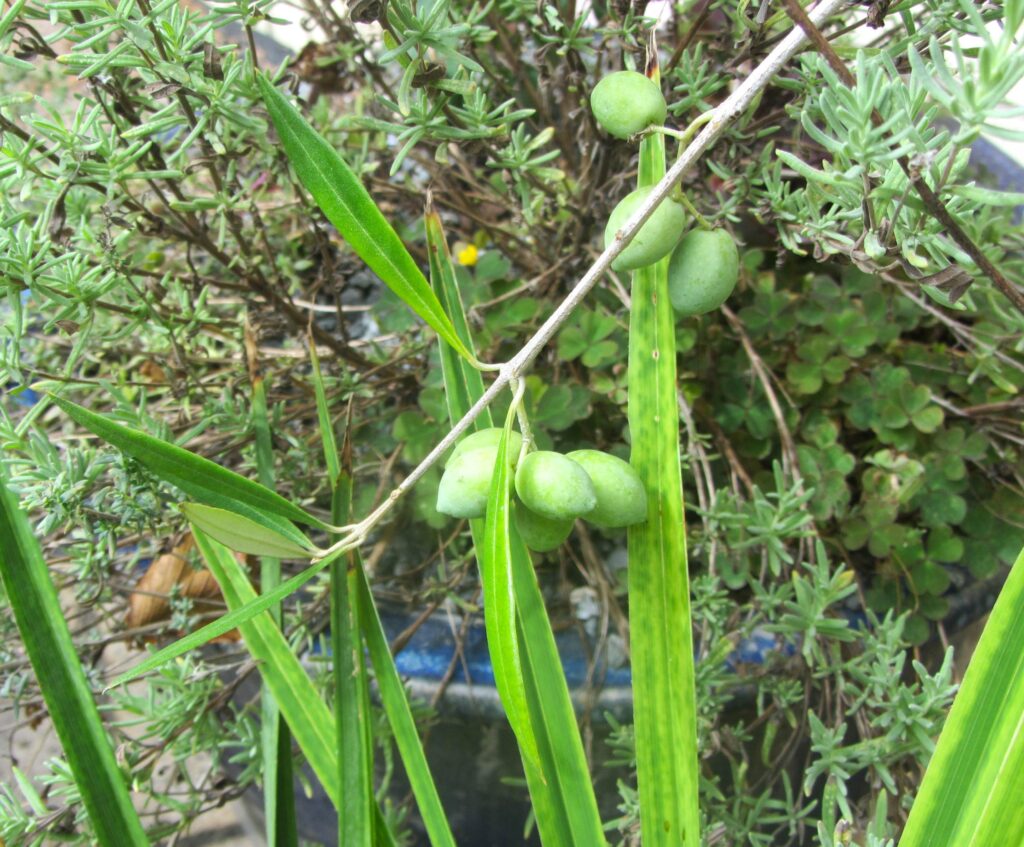Prized Plants at the Olympic Games

European olive, Olea europaea, will survive our Williamsburg winter when grown in a sunny, protected spot. Olive trees are considered sacred to Zeus. Photo courtesy of E. L. McCoy
The Olympic Games, a symbol of international unity and athletic excellence, incorporate plants and flowers into their ceremonies. These botanical elements enhance the visual appeal of the events and carry cultural and historical significance as well.
Laurel and Olive in Ancient Greece
In ancient Greece, victors of the Olympic Games were awarded olive wreaths, known as kotinos, made from the branches of the olive tree which is sacred to Zeus. This tradition dates back to 776 BCE and symbolizes peace, wisdom, and victory. Laurel wreaths, derived from the laurel tree, Laurus nobilis, were awarded at the Pythian games, held in honor of Apollo two years after each Olympics. The laurel tree is considered sacred to Apollo, and represented honor and victory.
The Importance of Plants at Modern Olympic Games
In the modern Olympics, victors are presented with bouquets of flowers in addition to medals. Host countries play a crucial role in carefully selecting blooms that represent their region while also considering the symbolic meaning of the flowers and foliage. For example, the bouquets presented to medalists at the London 2012 Olympic Games included a mix of roses, lavender, rosemary, mint, and wheat, plants that were chosen for both their aesthetic appeal and symbolic meanings, such as remembrance and celebration.
The Rio 2016 Olympics bouquets focused on sustainability and opted for victory sculptures made from recycled materials instead of traditional flower bouquets emphasizing environmental awareness.
The Tokyo 2020 Olympics featured victory bouquets with a mix of sunflowers, Eustoma, a variety of gentians. The flowers were chosen for their regional significance and the messages they conveyed. Sunflowers represented the resilience of regions affected by the 2011 earthquake and tsunami, while Eustoma symbolized hope and recovery.
The victory bouquets given to medalists at the Paris 2024 Olympics were a sight to behold. These bouquets, a blend of vibrant blooms which were each selected for its significance and environmental consideration, were a true reflection of the host nation’s floral heritage. Roses, symbolizing love and respect, were a central element. Delphiniums, representing protection and goodwill, added a touch of elegance to the arrangements. Dahlias, known for their bold colors and diverse forms, embodied strength and resilience. Sunflowers, with their bright, cheerful appearance, symbolized joy and positivity, aligning with the celebratory spirit of the games. These bouquets were a visual treat and a powerful symbol of the unity and spirit of the Olympics.
These flowers were sourced from sustainable farms around Paris, ensuring minimal environmental impact and supporting local agriculture. The bouquets’ design emphasized eco-friendliness, focusing on reducing the carbon footprint associated with transporting flowers over long distances.
In recent years, the Olympics have placed a growing emphasis on sustainability. Host cities incorporate native plants into their landscaping efforts to promote biodiversity and environmental stewardship. This trend highlights the evolving relationship between the Olympics and ecological consciousness.
Grow Your Own Bay Laurel and Olive Shrubs
Why not add a bit of Olympic flair to your garden by incorporating a bay laurel, Laurus nobilis, into your fall containers? Young trees, often available at area grocery stores and plant shops, are a fast and reliable way to get your container planting going. You can harvest leaves throughout the growing season by pinching off new growth as needed to use in making soups, stews, and sauces.
Select a container with ample drainage holes to prevent water logging, which can damage your plant’s roots. Bay laurel trees can grow quite large, to 8′, but they tolerate being slightly root-bound. Choose a container with enough space for initial growth, but no more than 2″ larger than the pot it is currently growing in, unless you are combining it with other plants in an arrangement. A pot around 24″ should be sufficient for a larger tree as it matures to a 5′ to 6′ foot plant.
Use a good quality, well-draining potting mix that contains some finely shredded bark and fertilizer to get your tree started. Plant your bay laurel plant in the pot at the same level it was growing, never deeper, and = mulch lightly to cover the soil. Then water thoroughly to settle the tree in its new pot. Bay laurels prefer full sun to partial shade, especially in hot climates. South-or west-facing sunny windows indoors or a shaded spot on your patio are ideal. Bay laurel is hardy in Zones 8b-10, so bring your potted tree indoors before winter.

Olive shrubs will set fruit when more than one variety is grown, and when the plants enjoy a few months of temperatures under 50F. Grow olive shrubs alongside Mediterranean herbs like rosemary and lavender. Photo courtesy of E. L. McCoy
European olive trees, Olea europaea, can be found locally and also perform well in fall containers. They will bear fruit after a few years when grown near another olive tree for pollination. Some varieties are hardy to Zone 7, though most are hardy in Zones 8a-10. Olives require a few months of temperatures around 40F to 50F to flower and fruit. Grow them in a sheltered, sunny location if you leave them outside through the winter. Olives can grow to 30′ or more when planted in the ground, but can be kept smaller when grown in containers. Plant in the same way as the bay laurel and grow in full sun. Olives are drought tolerant once established.
Water your bay laurel or olive when the top inch or two of soil feels dry. Avoid over watering, which can lead to root rot. Feed your tree with a light feeding with a balanced fertilizer, or opt for organic options like kelp meal or worm castings, during the spring growing season. Prune your tree in the springtime to maintain its shape and encourage bushier growth. Enjoy!
